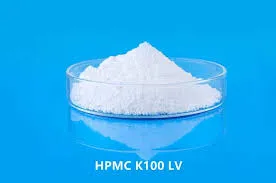
Nov . 09, 2024 08:03 Back to list
Understanding Hydroxypropyl Methyl Cellulose Uses and Applications in Various Industries
Hydroxypropyl Methyl Cellulose An Overview
Hydroxypropyl Methyl Cellulose (HPMC) is a semi-synthetic polymer derived from cellulose, a natural polymer found in the cell walls of plants. It is widely used in various industries due to its versatile properties. HPMC is white to off-white in color, odorless, tasteless, and soluble in water, making it a valuable ingredient in a range of applications, including pharmaceuticals, food, cosmetics, and construction.
Chemical Structure and Properties
The chemical structure of HPMC consists of a cellulose backbone that has been modified by the introduction of hydroxypropyl and methyl groups. This modification enhances its solubility and provides unique functional characteristics. HPMC is categorized based on the degree of substitution for hydroxypropyl and methyl groups, which influences its viscosity, gel formation, and solubility in different solvents.
One of the key properties of HPMC is its ability to form a gel when heated and dissolve upon cooling, making it an excellent thickening agent and stabilizer. Its thickening capability varies depending on its molecular weight and degree of methylation. Additionally, HPMC is a non-ionic polymer, which means it is not affected by the ionic strength of the solution, making it suitable for a wide range of formulations.
Applications
1. Pharmaceuticals HPMC is widely used in the pharmaceutical industry for its binding, coating, and controlled-release properties. It serves as a binder in tablet formulations, ensuring consistent dosage and improved stability. Furthermore, HPMC is often employed as a coating material for sustained-release formulations, allowing for a gradual release of active ingredients over time.
2. Food Industry In food applications, HPMC acts as a thickener, stabilizer, and emulsifier. It helps improve the texture and mouthfeel of food products and is commonly used in baked goods, sauces, salad dressings, and dairy products. Its ability to retain moisture makes it valuable in extending the shelf life of various food items.
hydroxypropyl methyl cellulose cas

3. Cosmetics and Personal Care Products HPMC is a popular ingredient in cosmetic formulations due to its film-forming and thickening properties. It is found in lotions, creams, shampoos, and other personal care products, providing a smooth texture and enhancing product stability. Additionally, its non-toxic nature makes it suitable for sensitive skin formulations.
4. Construction In the construction industry, HPMC is utilized as a polymer additive in cement-based products. It improves the workability and adhesion of mortar and plaster, providing better performance for construction materials. Furthermore, HPMC enhances water retention, allowing for extended workability time and improved finish quality.
Safety and Environmental Considerations
HPMC is generally recognized as safe (GRAS) when used in food and pharmaceutical applications, with extensive safety data confirming its non-toxic nature. However, as with any chemical substance, it is essential to follow recommended guidelines for usage and to consider potential allergies or sensitivities in some individuals.
From an environmental perspective, HPMC is derived from renewable resources, as it originates from cellulose. Its biodegradable nature is advantageous, making it a preferred choice in achieving sustainability goals in various industries.
Conclusion
In summary, Hydroxypropyl Methyl Cellulose is a multifunctional polymer with a wide array of applications across numerous sectors. Its unique characteristics, including solubility, viscosity, and gel-forming abilities, render it an essential ingredient in pharmaceuticals, food, cosmetics, and construction. As industries continue to seek sustainable and efficient solutions, HPMC remains a valuable resource that enhances product performance while ensuring safety and environmental responsibility.
-
Versatile Hpmc Uses in Different Industries
NewsJun.19,2025
-
Redispersible Powder's Role in Enhancing Durability of Construction Products
NewsJun.19,2025
-
Hydroxyethyl Cellulose Applications Driving Green Industrial Processes
NewsJun.19,2025
-
Exploring Different Redispersible Polymer Powder
NewsJun.19,2025
-
Choosing the Right Mortar Bonding Agent
NewsJun.19,2025
-
Applications and Significance of China Hpmc in Modern Industries
NewsJun.19,2025







